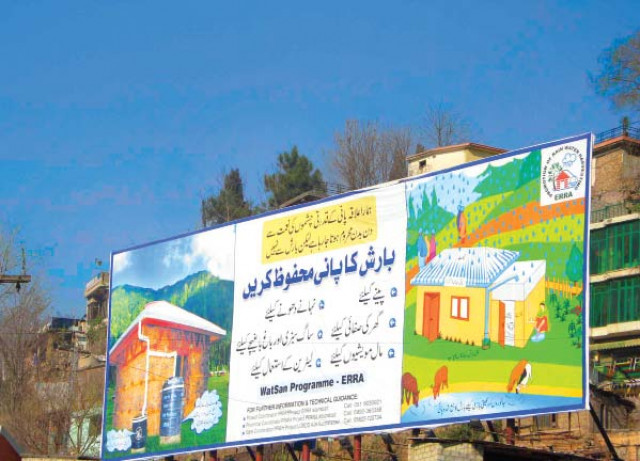Rainwater harvesting way of the future
A project to harvest rain water to manage its paucity has taken effect.

Rainwater harvesting way of the future
The Earthquake Rehabilitation and Reconstruction Authority (ERRA) has initiated the project for which Oil Producing Countries Fund for International Development (OFID) has provided 6.2 million US dollars as soft loan.
The feasibility of the project was tested and introduced in two earthquake affected villages of AJK and K-P after which it was launched in 20 union councils of both the areas. About 250,000 earthquake survivors of 40,000 houses will benefit from the project.
This is Pakistan’s first large-scale public sector project for rainwater harvesting under which the motivation for rain water storage and its usage will be promoted. ERRA has started a public awareness campaign in earthquake affected areas for rainwater harvesting by putting up billboards in public places.
According to Director General Watsan ERRA Syed Zaheer Gardezi, earthquake affected areas receive maximum rain in the country, with an annual average of 1,500 mm. After harvesting, the it can be utilised to cater for 60 to 80 per cent of a household’s water requirement.
“Billions of rupees can be saved through water harvesting” said Gardezi.
He disclosed that the government was planning a Rs30 million water supply scheme in Alai village of K-P, when Erra intervened and introduced rainwater harvesting, thus providing a smart alternative for water supply.
90 per cent AJK’s population resides in rural areas where water shortage has given rise to various health and litigation issues.
Gardezi said that rainwater harvesting was easier and cheaper than other existing methods as the post-quake reconstructed houses had tin roofs, which are ideal for rain water storage.
Brushing aside the apprehension that rain water is not safe for drinking, he clarified that rain water is more transparent than others because when it is cropped directly from a tin roof, it does not touch the ground where impurities can pollute it.
Elaborating on the method, he said, “Rainwater harvesting is the accumulation and storing of rainwater. It has been used to provide drinking water for livestock and water for irrigation to refill aquifer; a process called ground storage.”
Rainwater collected from the roofs of houses, tents and local institutions can make an important contribution to the availability of drinking water. Water collected from the ground, sometimes from areas which are especially prepared for this purpose, is called storm-water harvesting. In some cases, rainwater may be the only available or economical water source.
Rainwater harvesting systems can be simple to construct from inexpensive local materials and are potentially successful in most habitable locations. Roof rainwater may not require treatment before consumption. Although some rooftop materials may produce rainwater that is harmful to health, it can be useful in flushing toilets, washing clothes, watering gardens and washing cars; these uses alone halve the amount of water used by a typical home. Household rainfall catchment systems are appropriate in areas with an average rainfall greater than 200 mm per year.
Published in The Express Tribune, February 18th, 2011.



















COMMENTS
Comments are moderated and generally will be posted if they are on-topic and not abusive.
For more information, please see our Comments FAQ